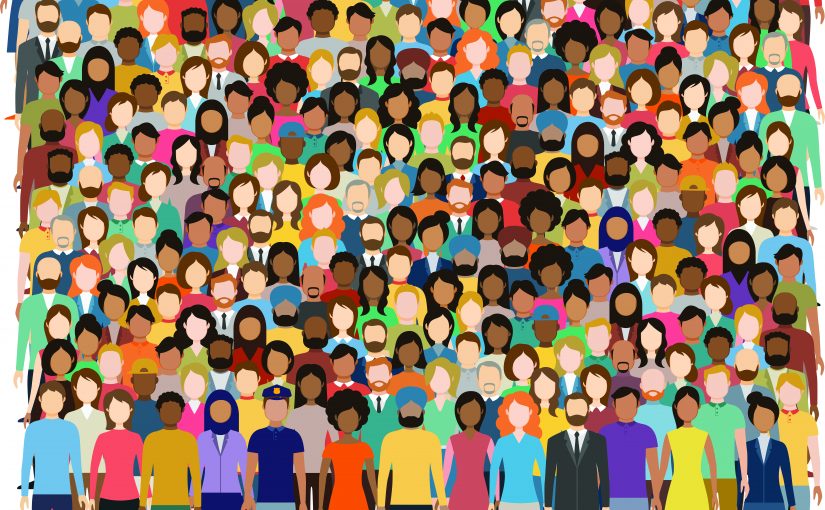Empathy is often mentioned as a key ingredient for enhancing community-police relations, especially following the publication of the Final Report of the 2015 Presidential Task Force on 21st Century Policing.1 This increased demand for empathic policing is not surprising: officers can adequately address the needs of a community only when they can identify and understand what those needs are. When community members believe that the police are addressing such issues, their confidence, trust, and general attitude toward the police improve.2
As a result of the recommendations of the report and from leaders across the law enforcement and criminal justice fields, many organizations have begun incorporating empathy into practice. For example, the Criminal Justice Training Center in Burien, Washington, the police academy for most law enforcement in Washington State, has incorporated empathy education as a central component of its basic police training program. Training programs such as the LEED (Listen and Explain with Equity and Dignity) model and Axon’s VR Training exist to help officers engage in more empathic communication.3
However, conversations surrounding empathy in policing tend only to provide a cursory overview of what empathy is—the ability to understand and feel what others are thinking and feeling. Empathy is widely viewed as a good, positive characteristic. It is associated with prosocial behavior and is a key ingredient in the formation and maintenance of healthy, loving relationships. While this conceptualization of empathy is technically correct, diminishing empathy into simply “the ability to understand and feel what others are thinking and feeling” overlooks important components of empathy that distinguish it from other separate—but related—concepts such as sympathy, compassion, and altruism.
Decades of research indicates that empathy is a complex psychological process. As social and behavioral scientists study policing and work with police agencies to enhance performance, they are constantly confronted by the practical and scientific reality that the ability to understand and feel the mental states of others is not easy. It requires the intricate interaction among emotional, behavioral, and cognitive capabilities to function properly. This process is even more complicated in the context of the policing profession given the uncertain, stressful nature of situations that officers encounter and the need to be vigilant. Deficiencies in empathic ability have been consistently shown to negatively impact relationships, well-being, and quality of life.4
So, what is empathy, exactly, beyond the surface definition? What functions does it serve? What sets empathy apart from other related concepts? Why does it play such a critical role in the quality of our relationships and social interactions? What can the science of empathy tell us about improving our empathic skills?
Cognitive and Affective Empathy
Empathy comprises two components: cognitive empathy and affective empathy. Cognitive empathy refers to the ability to accurately identify what others are thinking or feeling while understanding that it may differ from our own thoughts and feelings. Affective empathy, on the other hand, refers to the ability to emotionally share the feelings of others while understanding that it may differ from our own feelings.
Cognitive and affective empathy are not one and the same: sharing the excitement of your partner’s retirement is separate from knowing and understanding how your partner is thinking and feeling about retiring. Both components are also equally important and fundamental to empathy. To use an example from antisocial behavioral research, bullies may know what their victims fear (cognitive empathy).5 However, the absence of their having affective empathy would hinder them from vicariously experiencing the fear they produce in their victims. Exhibiting only one kind of empathy does not necessarily qualify as being empathic. In fact, most people would likely not describe bullies as empathic even though the bullies are fully capable of accurately inferring what their victims are thinking and feeling.
What Sets Empathy Apart from Related Concepts?
It is not uncommon to conflate empathy with concepts such as sympathy, compassion, and altruism. Although empathy shares some similarities with these concepts, there are important differences that distinguish them from one another.
Sympathy involves a feeling of care and concern for another and is typically accompanied by a desire to see them in a better state. Sympathy does not require shared knowledge or emotions. Having sympathy for someone does not mean having empathy for them. An individual can have sympathy for a friend who was laid off, but the individual cannot have empathy for their friend if they have not had the experience of being laid off themselves.
Compassion is similar to empathy in that it involves sharing another’s emotions. However, unlike empathy, compassion also involves the desire and readiness to lessen another’s suffering. Knowing what others are thinking and feeling does not always equate to taking any sort of action to lessen their suffering, or the desire to do so. An individual can have empathy for a friend who was laid off because the individual has also had the experience of being laid off, but to have compassion, the individual must also want to console their friend and take action to do so.
Altruism refers to having selfless regard and concern for the well-being of others. Knowing what others are thinking and feeling does not always equate to having selfless regard and concern for the well-being of others. An individual may display altruism by paying the bills for a friend who was laid off, but this action does not necessarily require the individual to know what their friend is feeling or thinking.
However, empathy often acts as the catalyst for sympathy, compassion, and altruism. For instance, having the knowledge and understanding that someone is experiencing sadness can more easily engender feelings of care and concern for that individual (sympathy), the desire to take away this individual’s sadness (compassion), and selfless concern for their well-being (altruism).
Empathy as a Guide
 Knowing the mental state of others enables individuals to steer an interaction in the direction that is in line with their needs, as well as to respond to the needs of others, in an appropriate manner. This is the reason why empathy is such a crucial element in social interactions: it provides guidance on the optimal course of action in any given situation. This guidance incorporates one’s own perspective and others’ perspectives. In this way, empathy is actually adaptive. Having knowledge of other people’s mental states can be used to better anticipate their behavior and identify options for mutually beneficial solutions.
Knowing the mental state of others enables individuals to steer an interaction in the direction that is in line with their needs, as well as to respond to the needs of others, in an appropriate manner. This is the reason why empathy is such a crucial element in social interactions: it provides guidance on the optimal course of action in any given situation. This guidance incorporates one’s own perspective and others’ perspectives. In this way, empathy is actually adaptive. Having knowledge of other people’s mental states can be used to better anticipate their behavior and identify options for mutually beneficial solutions.
Empathy as a Social Cue
Practicing empathy shapes how people behave toward others. By knowing what community members are thinking and feeling, police officers can better meet the community’s needs. This knowledge conveys several important messages. It conveys that officers not only hear the needs of community members, but also understand and respect what those needs are. It also conveys that officers are effective at their jobs, which means that they can be trusted to protect and serve the community. And, if community members believe officers can be trusted, community members will be more likely to cooperate with them and generally have more positive attitudes toward them. By virtue of engaging in empathy, officers actively demonstrate through social cues their trustworthiness and that they have the best interests of the community at heart.
Keys to Improving Empathic Accuracy
Just like any other skill, empathy can be improved with effective training and consistent practice. Various training programs are available for officers who want to develop and practice empathic communication across a wide variety of scenarios, and a common goal across these training programs focuses on improving empathic accuracy. This is a necessary—and, arguably, the most challenging—step in the development of empathy and empathic communication. After all, what good does it do if individuals cannot correctly identify what others are thinking and feeling in the first place?
Regardless of the method by which individuals work to improve their empathic accuracy, there are several important points that should be acknowledged for empathic accuracy training to be successful. Below is an outline of three of these points that are based on more than 30 years of empathic accuracy research.
1. People are limited in their ability to accurately infer the thoughts and feelings of others. Unsurprisingly, people are typically more accurate at inferring the mental state of someone they know very well compared to a total stranger. However, empathic accuracy still tends to be low despite how well an individual may or may not know someone. On average, people are about 20 percent accurate when inferring a stranger’s mental state; about 30 percent accurate when inferring a close friend’s mental state; and no higher than 35 percent accurate when inferring a spouse’s mental state.6 In other words, while individuals can and do have insight into other people’s thoughts and feelings, that insight is actually quite limited unless steps are taken to improve it.
Contrary to popular belief, studies have shown inconsistent and weak relationships between empathic accuracy and intelligence and gender.7 Aside from training, only two individual characteristics have been consistently associated with empathic accuracy: age-related maturational change and certain clinical conditions. The strongest age-related increase in empathic accuracy occurs from infancy through late childhood. During this stage, children develop several important skills, such as theory of mind, which enables them to understand that other individuals can have thoughts and feelings that are different from their own. However, empathic accuracy does not appear to improve as a function of age beyond adolescence.8
Certain clinical conditions also appear to hinder empathic accuracy capabilities. For instance, Autism Spectrum Disorder (ASD) has been linked with hindering one’s ability to accurately infer the mental state of others through deficiencies in social development.9 Other clinical conditions that have been linked to low empathic accuracy include psychopathy, schizophrenia, and others.10
2. Motivation impacts accuracy. Motivation to accurately infer others’ mental state ultimately influences accuracy at inferring others’ mental state. Studies have shown that, while empathic accuracy can indeed be improved through training, differences in empathic accuracy appear to be generally based on motivation rather than skill.11 The source of motivation can come from the self (an individual may be intrinsically motivated to be empathically accurate) or the situation (e.g., external pressures to resolve a difficult call for service without escalating the level of tension may induce greater empathic accuracy by a responding officer).
3. Empathic accuracy also depends on the “readability” of others. Empathic accuracy does not solely depend on the skill and capability of the individual who is inferring another person’s mental state (the perceiver). It also depends, in large part, on how “readable” or transparent the other person is (the observed). Being “readable” involves displaying or conveying cues that provide insight into the individual’s mental state. For example, individuals are more “readable” when their thoughts and feelings are consistent with what they are talking about. On average, what people say will, in fact, mirror their thoughts and feelings. However, this is not always the case. Some individuals may use what they say to cover their true thoughts and feelings. Or some individuals may be distracted or mentally preoccupied with something else as they are talking. Both situations will likely produce some level of confusion for the perceiver, thus preventing them from accurately inferring the thoughts and feelings of the observed. Both the observed and the perceivers play a fairly large role in empathic accuracy.12
Overall, there are many compelling reasons for police officers to be more empathic. However, even where empathy can be improved, it should be viewed as one of many types of social and emotional intelligence skills that are key to increasing community trust of police or enhancing police performance in face-to-face interactions. As decades of empathy research have indicated, empathy does not exist in a psychological vacuum. Empathy must be cultivated along with other important characteristics (such as motivation and empathic expression) that help to develop and maintain it, especially if accurate judgements about the mental state of others are to be translated into the kinds of social interactions that are likely to improve trust.

In addition, caution needs to be taken regarding the various empathy trainings that law enforcement agencies consume. While empathy may very well play an important role in an officer’s ability to successfully de-escalate situations, negotiate conflicts, and connect with community members, more research is greatly needed to assess the efficacy of empathy training utilized by law enforcement. Empathy is an incredibly complex process that is fundamental for successfully navigating everyday life. It performs many important functions and has many serious implications for the quality of relationships and social interactions. As such, it is imperative that more opportunities are provided for researchers and police departments to collaborate and better understand the impact that empathy has in the context of policing. d
|
|
|
|
Notes:
1President’s Task Force on 21st Century Policing, Final Report of the President’s Task Force on 21st Century Policing (Washington, DC: Office of Community Oriented Policing Services, 2015).
2U.S. Department of Justice, Community Relations Service, “Importance of Police-Community Relationships and Resources for Further Reading,” Community Relations Services Toolkit for Policing; Chad Posick, Michael Rocque, and Nicole Rafter, “More Than a Feeling: Integrating Empathy into the Study of Lawmaking, Lawbreaking, and Reactions to Lawbreaking,” International Journal of Offender Therapy and Comparative Criminology 58, no. 1 (2014): 5-26; Emily G. Owens et al., Promoting Officer Integrity through Early Engagements and Procedural Justice in the Seattle Police Department (2016).
3Pam Petersen, “The Future of Training Includes VR Empathy,” Axon Technology News & Views (blog), July 16, 2021.
4William Ickes and Sara D. Hodges, “Empathic Accuracy in Close Relationships,” in Jeffry A. Simpson and Lorne Campbell eds., The Oxford Handbook of Close Relationships (New York, NY: Oxford University Press, 2013), 348–373; Shelley Dean Kilpatrick, Victor L. Bissonnette, and Caryl E. Rusbult, “Empathic Accuracy and Accommodative Behavior among Newly Married Couples,” Personal Relationships 9, no. 4 (December 2002): 369–393; Michaela Riediger and Elisabeth S. Blanke, “Knowing What Others Think and Feel: Empathic Accuracy Across Adulthood,” Annual Review of Developmental Psychology 2 (December 2020): 157–176.
5Panayiotis Stavrinides, Stelios Georgiou, and Vaso Theofanous, “Bullying and Empathy: A Short‐Term Longitudinal Investigation,” Educational Psychology 30, no. 7 (2010): 793–802.
6Tiffany Graham, “Gender, Relationship, and Target Differences in Empathic Accuracy” (doctoral dissertation, University of Texas at Arlington, 1994); Linda Stinson and William Ickes, “Empathic Accuracy in the Interactions of Male Friends versus Male Strangers,” Journal of Personality and Social Psychology 62, no. 5 (1992): 787–797; Lesley Verhofstadt, Ann Buysse, and William Ickes, Social support in couples: An examination of gender differences using self-report and observational methods. Sex Roles, 57, no. 3-4 (August 2007): 267–282; Lesley Verhofstadt et al., “Support Provision in Marriage: The Role of Emotional Similarity and Empathic Accuracy,” Emotion 8, no. 6 (December 2008): 792–802.
7Vivian P Ta and William Ickes, “Empathic Accuracy,” in Routledge Handbook of Philosophy of Empathy, ed. Heidi Maibom (New York: Routledge, 2017), 353–363.
8Alison Gopnik and Henry M. Wellman, “The ‘Theory’ Theory,” in Mapping the Mind: Domain Specificity in Cognition and Culture, eds. Lawrence A. Hirschfield and Susan A. Gelman (New York, NY: Cambridge University Press, 1994), 257–293; Josef Perner and Heinz Wimmer, “‘John Thinks That Mary Thinks That…’ Attribution of Second-Order Beliefs by 5- to 10-Year-Old Children,” Journal of Experimental Child Psychology 39, no. 3 (June 1985): 437–471.
9Ellen Demurie, Maaike De Corel, and Herbert Roeyers, “Empathic Accuracy in Adolescents with Autism Spectrum Disorders and Adolescents with Attention-Deficit/Hyperactivity Disorder,” Research in Autism Spectrum Disorders 5, no. 1 (January–March 2011): 126–134; Koen Ponnet et al., “Mind-Reading in Young Adults with ASD: Does Structure Matter?” Journal of Autism and Developmental Disorders 38, no. 5 (May 2008): 905–918.
10Geoffrey Bird and Essi Viding, “The Self to Other Model of Empathy: Providing a New Framework for Understanding Empathy Impairments in Psychopathy, Autism, and Alexithymia,” Neuroscience & Biobehavioral Reviews 47 (November 2014): 520–32; Junghee Lee et al., “Schizophrenia Patients Are Impaired in Empathic Accuracy,” Psychological Medicine 41, no. 11 (November 2011): 2297–2304; Yonat Rum and Anat Perry, “Empathic Accuracy in Clinical Populations,” Frontiers in Psychiatry 11 (June 2020): 457.
11Carol Marangoni et al., “Empathic Accuracy in a Clinically Relevant Setting,” Journal of Personality and Social Psychology 68, no. 5 (1995): 854-869; Kristi J. Klein and Sara D. Hodges, “Gender Differences, Motivation, and Empathic Accuracy: When It Pays to Understand,” Personality and Social Psychology Bulletin 27, no. 6 (2001): 720–730.
12William Ickes et al., “On the Difficulty of Distinguishing ‘Good’ and ‘Poor’ Perceivers: A Social Relations Analysis of Empathic Accuracy Data,” Personal Relationships 7, no. 2 (June 2000): 219–234; Karyn L. Lewis et al., “Reading Between the Minds: The Use of Stereotypes in Empathic Accuracy,” Psychological Science 23, no. 9 (September 2012): 1040–1046.
Please cite as
Vivian Ta and Brian Lande, “Empathy: What Is It, Exactly?” Police Chief Online, October 19, 2021.





